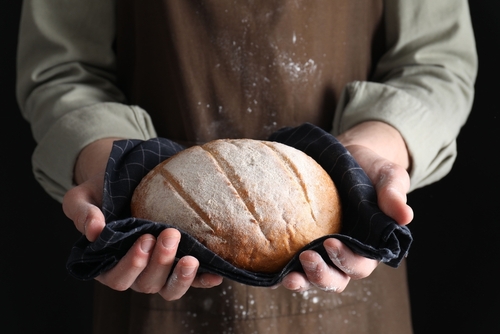A humble splash of water and a blast of oven heat can transform yesterday’s stale, rock-hard bread into a loaf so fresh you’ll swear it’s just left the bakery—yet most people toss it out, missing one of the simplest kitchen miracles in the book.
Social Media Turns a Forgotten Trick Into a Viral Movement
Millions watched as home cooks on TikTok and YouTube dunked old baguettes under the tap, tossed them into a scorching oven, and pulled out golden, crusty loaves. This hack—once whispered among frugal grandmothers—became a digital sensation, resurrecting peasant practicality for a modern audience obsessed with kitchen wizardry and zero waste. Food & Wine’s 2014 video kicked off the trend, but it was the explosion of #breadrescue shorts in the early 2020s that cemented its viral legacy.
What drives this fascination? The hack’s simplicity: a quick rinse, a hot oven, and stale bread’s tragic destiny is reversed. Unlike other food fads, this one genuinely delivers, sparking debate about whether it’s culinary genius or just a clever rebrand of old-fashioned thrift. The digital age has transformed this centuries-old trick into a social movement, with influencers and food editors racing to validate—or debunk—its results. The core promise is clear: a few seconds and a splash of water can outsmart staleness, saving loaves and wallets alike.
The Science and Stakeholders Behind Bread’s Second Life
Stale bread isn’t dry from lost moisture alone; it’s the victim of starch retrogradation, a process where starch molecules crystallize, forcing water out of the crumb. Scientists and food professionals explain that wetting and reheating bread reverses this process, temporarily restoring softness and a crisp crust. The method works best for rustic, crusty loaves—think sourdough, ciabatta, and baguette—leaving soft, pre-sliced sandwich bread out in the cold.
The real power players in this story are the home cooks, influencers, and bakeries. Social media creators wield enormous influence, shaping public perception and household habits. Food editors and culinary professionals, acting as myth-busters and validators, weigh in with both enthusiasm and caution. Bakeries, meanwhile, watch consumer expectations evolve, sometimes fielding questions about how long their artisan loaves should last and how best to store or revive them. This evolving dynamic highlights a new awareness: bread is not disposable, but a resource worth saving.
From Tradition to Trend: How Bread Revival Became a Kitchen Staple
Long before TikTok, resourceful cooks revived stale loaves by toasting, steaming, or soaking them for bread pudding and croutons. The wet-and-bake method’s rediscovery comes as consumers demand more from their food—less waste, more value, and a return to hands-on kitchen skills. The trend’s momentum reflects not just the power of social media, but a growing cultural embrace of sustainability and culinary curiosity.
Short-term, the hack slashes food waste and stretches grocery budgets. Long-term, it could nudge bakeries to rethink packaging, offer storage tips, and educate customers about bread’s natural lifecycle. Experts agree: while the method won’t cure mold or replace lost flavor, it’s a scientifically sound, practical fix for many loaves. The collective impact? A subtle but significant shift in how society values simple, honest food—and how viral content can breathe new life into old wisdom.
Why This Hack Resonates—and Where It Falls Short
Expert consensus is nearly unanimous. Rehydration and heat work because they target starch retrogradation, not just surface dryness. The method is celebrated for its accessibility—no gadgets, no specialty ingredients, just water and heat. Still, food scientists and editors warn: this is not a universal fix. Moldy bread is a lost cause, and the technique can’t restore flavors that have faded with time. For soft sandwich bread, the result is often disappointing, with sogginess trumping any revival of texture.
Despite its limitations, the hack’s viral spread reflects a profound truth: in an age of abundance and waste, the simplest solutions often offer the greatest rewards. Bread that would have landed in the trash now gets a second act—sometimes fresher than the day it was bought. This story isn’t just about saving bread; it’s about reclaiming value, sparking curiosity, and inspiring a new generation to look twice before throwing anything away. Old wisdom, once forgotten, has become a badge of honor for the resourceful home cook.

